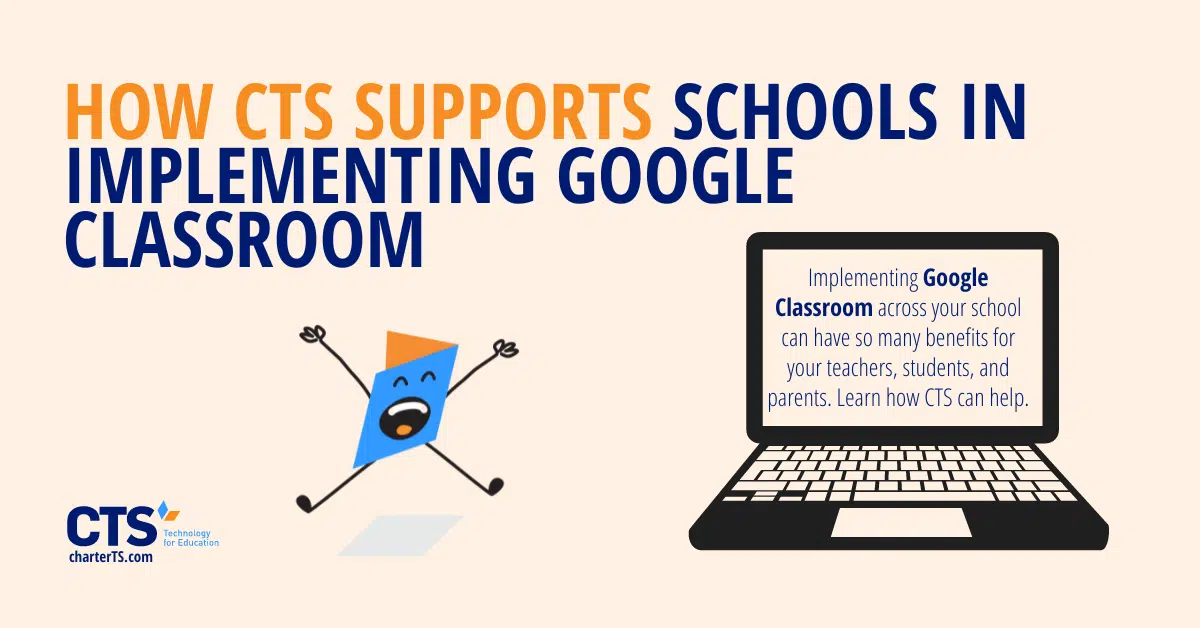A schoolwide approach to implementing Google Classroom gives teachers and students structured support for this powerful platform.
Google Classroom is a great platform for collaboration, classroom communication, and student material organization. This easy-to-use tool is a central location for teachers to create, share and collect assignments from students. It also provides students with access to the various tools of G Suite (e.g., Google Slides, Google Docs, Google Sheets, etc.) which they can use for individual work and for group projects.
Individual teachers can set up Google Classroom, add their students, and manage the platform on their own. However, using Google Classroom across a school creates consistency for teachers, students, and parents and allows for school operations or technology teams to support teachers in the set-up, implementation, and maintenance of the platform. When it comes to implementing Google Classroom, a clear delineation of roles and responsibilities between teachers and schools ops or IT teams affords teachers more time to focus on developing and delivering the instructional content.
Even when students are learning in-person full-time, online tools continue to facilitate learning.
Since its release in 2014, Google Classroom has been an incredibly popular online tool in the education space. The use of this tool grew significantly during 2020 and 2021 when virtual and hybrid instruction became the primary means of teaching due to COVID-19-related school closures. Even with a return to the normalcy of in-person learning, schools are still finding Google Classroom to be a valuable part of their instructional program.
Teachers can post lecture notes in Google Classroom for students to follow along with during class or to study at home. It’s a space where science teachers can share lab directions and writing teachers can lead students through the brainstorming, drafting, and revising cycles. This platform is also a great place for teachers to post homework assignments and for students to complete and submit them. This reduces paper waste in schools, makes it harder for students to misplace assignments, and makes it easier and more streamlined for teachers to collect, grade, and return work. Additionally, the collaborative nature of the G Suite tools creates opportunities for students to work synchronously and asynchronously on group projects.
Google Classroom has features to keep parents and guardians in the loop by giving them an option to sign up for automated updates. These email updates, called guardian summaries, can be set to either daily or weekly. They provide parents with an overview of their student’s missing work and upcoming work. Parents will also receive a preview of general class activities. This additional detail about their student’s work opens up more opportunities for parents to support and be involved.
The first step in implementing Google Classroom is to establish the schoolwide settings.
A school’s Google Super Admin point person can configure schoolwide settings (e.g., granting access to tools like Google Meet and Jamboard or turning on the option for guardian summaries) via Google’s Admin console. Next, the Super Admin can assign Google Classroom Administrator status to other staff members. This administrator status is often given to principals, assistant principals, and deans so that they can view classrooms and post schoolwide announcements. It is also helpful for operations and IT teams to have this type of administrator access. This gives them the ability to create classrooms, assign teachers to classrooms, set up family access, and ultimately transfer ownership to the teacher. Having individual classrooms configured in a centralized way can ensure that the settings are correct and that schoolwide naming conventions for classes and other norms are followed.
To ensure that they are prepared to manage the day-to-day functions of Google Classroom, teachers need training.
Providing teachers with professional development related to the technical and instructional aspects of using Google Classroom will set them and their students up for success. On the technical side, topics like managing classroom settings, managing notifications, setting up assignments, creating grading categories, and supporting students as they log in are salient. Discussions on instructional strategies pair well with technical professional development sessions. These topics could include norming on grading policies, best practices for creating engaging assignments, and determining the number of assignments per week.
After the initial set-up and subsequent training, teachers will have the skills they need to manage the day-to-day logistics of their Google Classroom. However, there will be times when teachers and students need maintenance support or troubleshooting from their school operations or IT teams. For example, if a school ops or IT team opts to manage the Google Classroom student rosters, they will need to be involved in managing any roster changes. Whenever a student enrolls in the school, disenrolls from the school, or changes classrooms, those updates will need to be reflected in Google Classroom.
At CTS, we support schools as they implement and integrate technology into their classrooms.
Our team is comprised of former teachers and school operations professionals who understand the unique needs and challenges of the school environment. We’ve worked with more than 60 schools across the United States, many of whom rely on Google to accomplish their unique missions. Contact us today to learn more about our services and how CTS can help ensure that your technology programming effectively serves teachers and students and is aligned with your school’s specific instructional needs.




